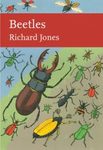Call us (08:30-17:00 UK)
01803 865913International
+44 1803 865913Need Help?
Help pagesWildlife Survey & Monitoring
Field Guides & Natural History
Academic & Professional Books
- Evolutionary Biology
- Evolution
- Human Evolution & Anthropology
- Cladistics, Phylogeny & Taxonomy
- View All
British Wildlife
British Wildlife is the leading natural history magazine in the UK, providing essential reading for both enthusiast and professional naturalists and wildlife conservationists. Published eight times a year, British Wildlife bridges the gap between popular writing and scientific literature through a combination of long-form articles, regular columns and reports, book reviews and letters.
Conservation Land Management
Conservation Land Management (CLM) is a quarterly magazine that is widely regarded as essential reading for all who are involved in land management for nature conservation, across the British Isles. CLM includes long-form articles, events listings, publication reviews, new product information and updates, reports of conferences and letters.












![Die Gottesanbeterin (Mantis religiosa) [The European Mantis]](http://mediacdn.nhbs.com/jackets/jackets_resizer_medium/17/178329.jpg?height=150&width=105)
![Die Seescheiden von Helgoland: Biologie und Bestimmung der Ascidien [ The Sea Squirts of Helgoland: Biology and Determination of Ascidians]](http://mediacdn.nhbs.com/jackets/jackets_resizer_medium/20/203911.jpg?height=150&width=108)
![Unsere Zuckmücken [Our Mosquitoes]](http://mediacdn.nhbs.com/jackets/jackets_resizer_medium/23/237825.jpg?height=150&width=107)







![Icones Insectorum Europae Centralis: Coleoptera: Scarbaeoidea: Geotrupidae, Trogidae, Glaresidae, Lucanidae, Ochodaeidae, Glaphyridae [English / Czech]](http://mediacdn.nhbs.com/jackets/jackets_resizer_medium/24/242733.jpg?height=150&width=106)



![Guide des Coléoptères d'Europe [Guide to the Beetles of Europe]](http://mediacdn.nhbs.com/jackets/jackets_resizer_medium/23/238721.jpg?height=150&width=106)







![Das Okapi [The Okapi]](http://mediacdn.nhbs.com/jackets/jackets_resizer_medium/16/164634.jpg?height=150&width=107)
![Verhalten der Gazellen [Behaviour of Gazelles]](http://mediacdn.nhbs.com/jackets/jackets_resizer_medium/20/203915.jpg?height=150&width=106)
![Das Blesshuhn: Fulica atra [Eurasian Coot]](http://mediacdn.nhbs.com/jackets/jackets_resizer_medium/17/172773.jpg?height=150&width=107)
![Lärmvögel, Turakos und Pisangfresser [Go-Away-Birds, Turacos and Musophaga]](http://mediacdn.nhbs.com/jackets/jackets_resizer_medium/17/172673.jpg?height=150&width=104)
![Die Saatkrähe [Rook]](http://mediacdn.nhbs.com/jackets/jackets_resizer_medium/17/172660.jpg?height=150&width=106)